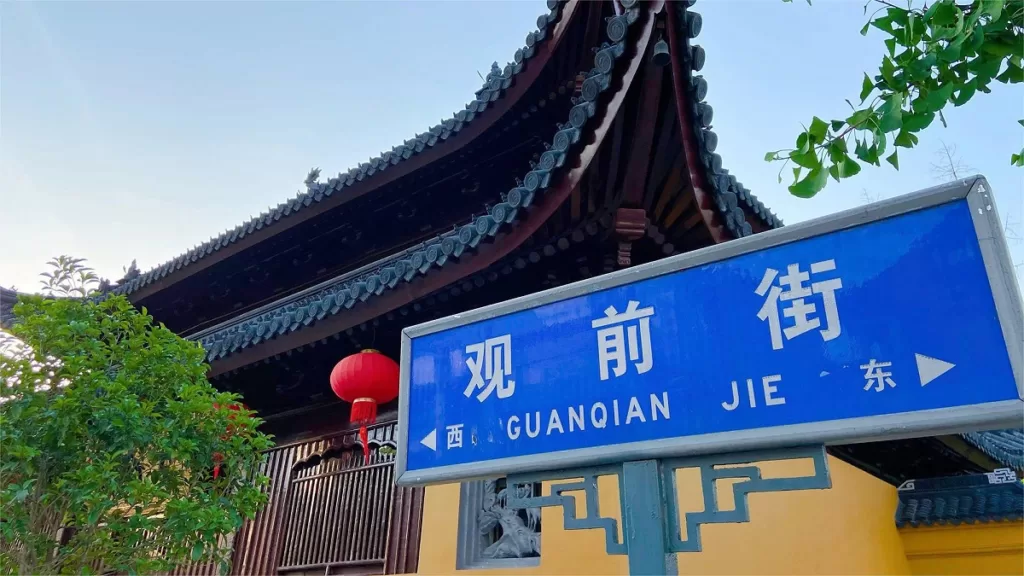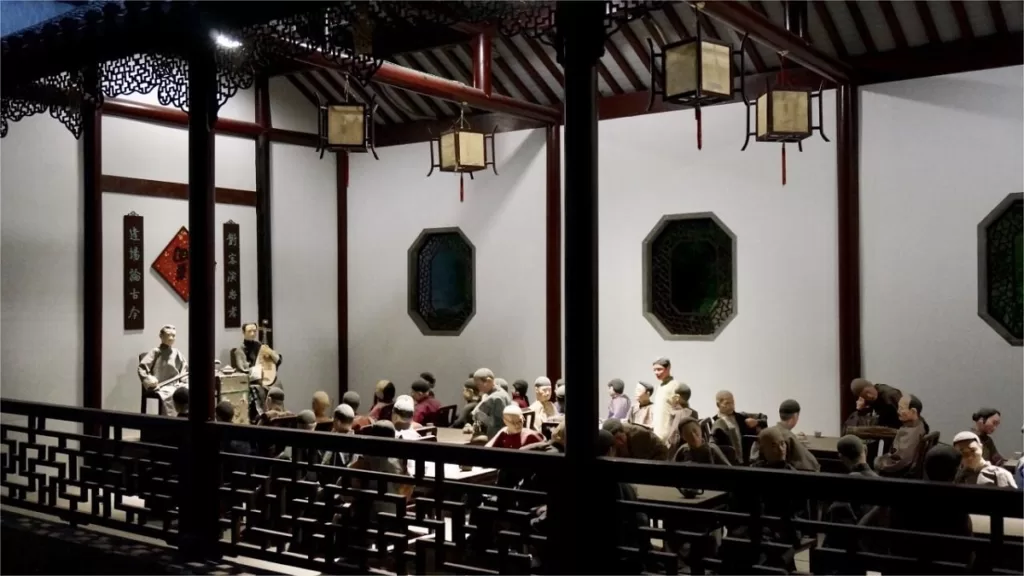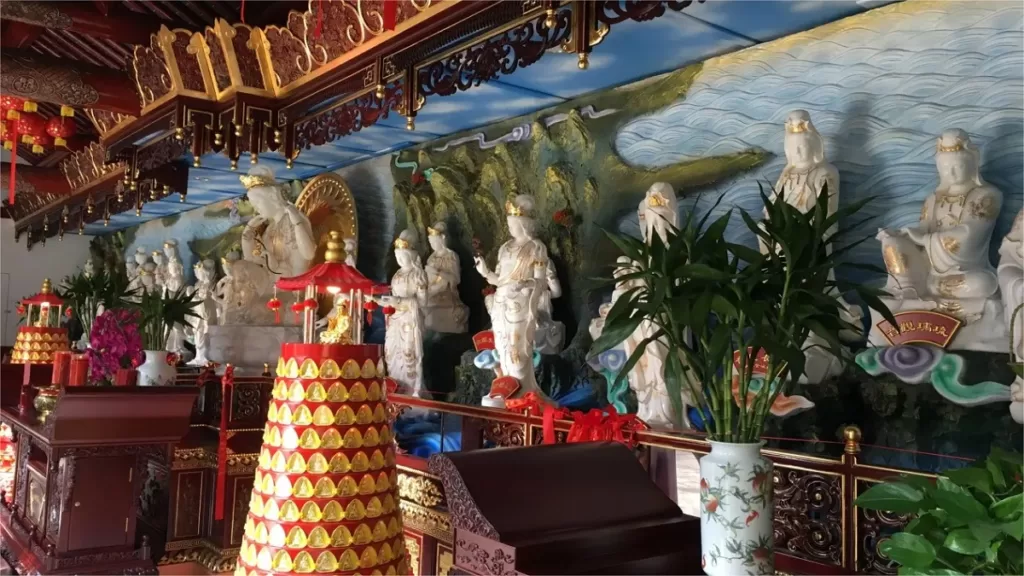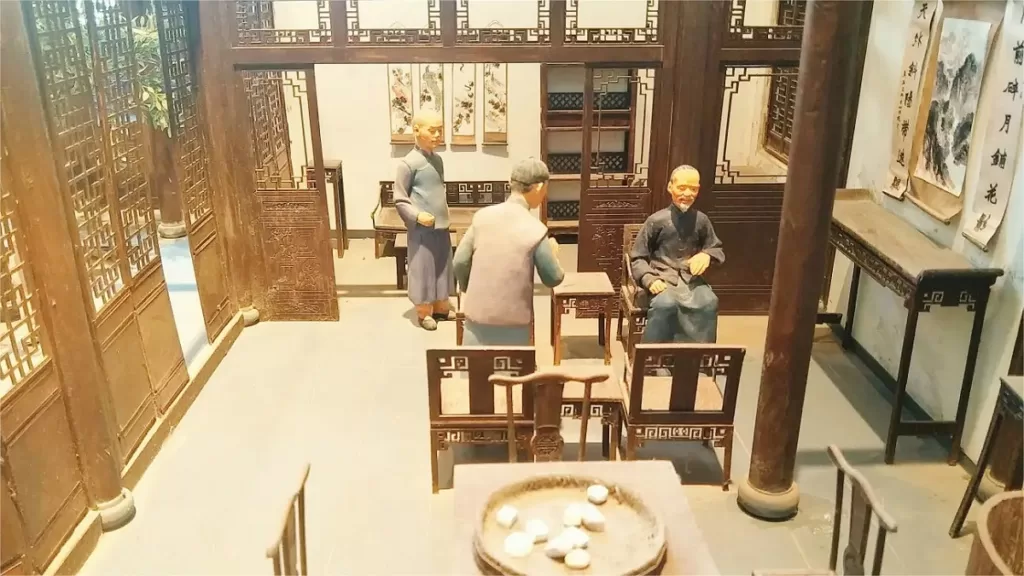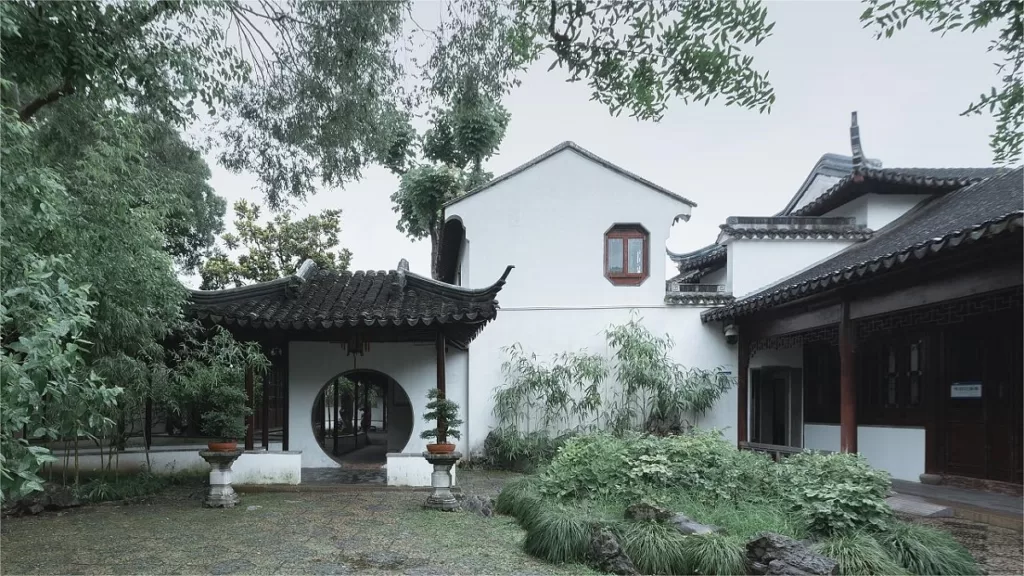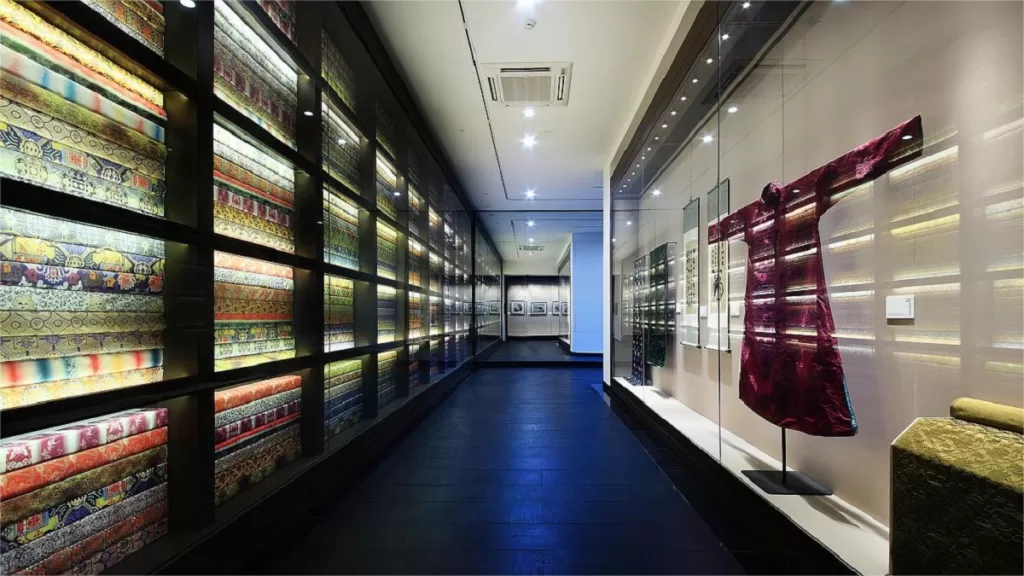Ouyuan Garden (耦园), originally named Sheyuan, underwent significant transformation during the reign of Emperor Tongzhi in the Qing Dynasty when Shen Bingcheng redesigned the garden into the current layout. The name “Ouyuan” was chosen for two reasons: first, the shape of the residential area and the east-west gardens resembles lotus roots (藕 in Chinese), and second, it signifies the union of Shen Bingcheng with the talented woman Yan Yonghua during a low point in his life (偶 in Chinese. Both 藕 and 偶 read Ou). The couple secluded themselves in the garden for eight years, symbolizing an ideal match.
Ouyuan is surrounded on three sides by rivers, with one side facing the street, covering a total area of approximately 8,000 square meters. The garden is organized around a central residential area with four halls, connected by a prominent structure linking the east and west gardens. Ouyuan is particularly suitable for couples, and its serene atmosphere makes it an ideal destination for visitors who wish to quietly appreciate the beauty of Suzhou gardens without the hustle and bustle of other famous gardens like the Humble Administrator’s Garden or the Lion Grove Garden.
Table of Contents
- Basic Information
- Location and Transportation
- Highlights of Ouyuan Garden
- Vlog about Ouyuan Garden
- Useful Tips Summarized from Reviews
- Attractions near Ouyuan Garden
Basic Information
| Estimated Length of Tour | 1 hour |
| Ticket Price | 25 RMB (1st March – 31st October) 20 RMB (1st November – 28th February the next year) |
| Opening Hours | 7.00 – 17.00; Last admission: 16.30 (1st March – 31st October) 7.00 – 16.30; Last admission: 16.00 (1st November – 28th February the next year) |
| History | 1723: Built by Lu Jin (陆锦), a retired high-rank official, and named as Xiaoyulin (小郁林) 1851: Destroyed in the war 1874: Bought and renovated by Shen Bingcheng (沈秉承), a high-rank official who retired because of disease 1876: Construction completed and renamed as Ouyuan Garden 1932-1941: Occupied by residents and gradually damaged 1950: The middle part was destroyed in a fire 1960: Bought by the city council and renovated 1965: Open to the public 1967 – 1977: closed for a decade 1980: Renovated again and was used as the campus of a school 1993: Renovated, evacuated the residents, and rebuilt the eastern garden 1994: Open to the public |
| Telephone Number | 0086-0512-67272717 0086-0512-67272722 |
Location and Transportation
Ouyuan Garden is nestled amidst Suzhou‘s labyrinthine network of canals, picturesque waterways, and historical neighborhoods. Its exact address is No. 6, Xiaoxinqiao Alley, Gusu District, Suzhou, Jiangsu Province. To get there, you can choose the following ways:
Bus: Take bus 204, 301, 305, 313, 9009, or 9029, get off at East Garden Stop (东园站), and walk about 500 meters to the south to reach the garden.
Metro: The nearest metro station to Ouyuan Garden is Xiangmen (相门) on line 1. After getting out of the station from Exit 3, walk about 650 meters to the north to reach the garden.
Highlights of Ouyuan Garden
Central Residential Area
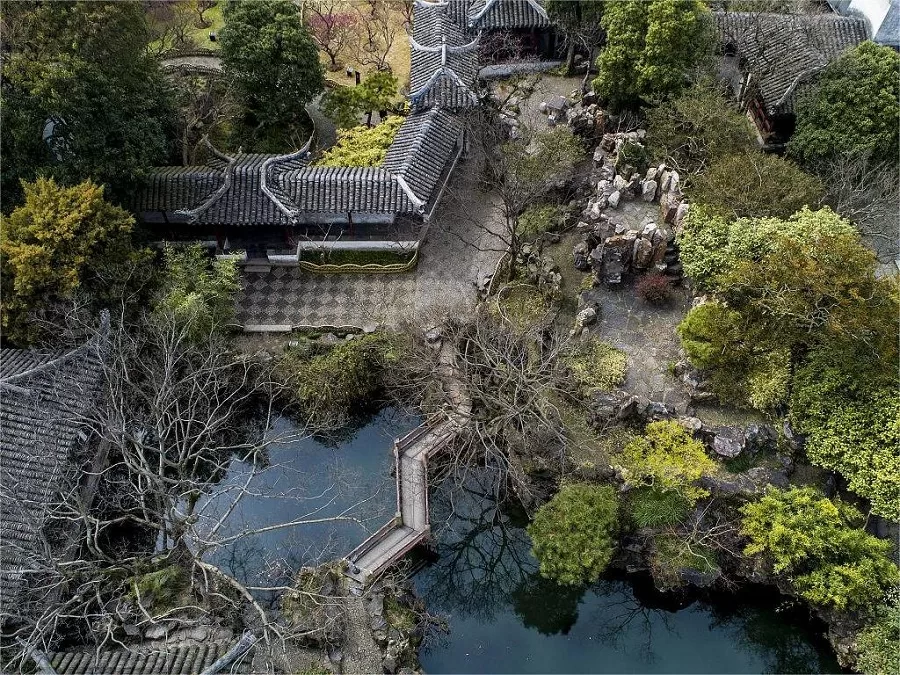
Upon entering Ouyuan through a small gate, visitors find themselves in the central residential area. From south to north, there are the gate hall, sedan hall, wine-carrying hall (main hall), and tower hall, resembling the layout of the residential area in the Master of the Nets Garden. The brick-carved gate of the tower hall, bearing the inscription “Poetry and Wine Celebration (诗酒联欢),” is exquisitely crafted. Inside, traditional Suzhou Pingtan music is performed, with the audience paying for each piece. The courtyard in front of the tower hall is spacious, flanked by side buildings on the east and west, forming a “凹” shaped plan.
East Garden

The East Garden is the essence of Ouyuan, featuring two major attractions. First, the robust yellow rockery, with the main mountain on the east side named Luoyun Peak. The peak descends into the Shouyue Pool on the west side, and on the east side of the peak lies a small mountain named Taoyu. Between the two mountains is a “deep gorge,” resembling a canyon, with steep cliffs on both sides. The intricate rockery creates a landscape that seamlessly integrates the features of mountains and rivers into the small garden, making the artificial rockery appear remarkably natural. The second highlight of the east garden is the “Suihan San You” wooden structure, a door frame. The delicate wood carvings on top are said to be relics from the Ming Dynasty. The My Love Pavilion in the eastern part of the garden is where Yan Yonghua played the zither, and next to it is the Tingqin Pavilion where Shen Bingcheng listened to her music. The garden is filled with subtle details that reflect the enduring and serene love between the two, making it worth exploring.
West Garden

The main hall in the West Garden is a study. North of it is a library, and to the east is the Heshou Pavilion built along the wall, adorned with beautiful brick-carved windows. To the south, there is a rockery, corresponding to the yellow rockery in the East Garden. The West Garden is small yet exquisite, serving as an excellent place for the owner to read. In the northwest corner of the West Garden, a private boat dock extends beyond Ouyuan’s enclosure, showcasing another unique feature. Visitors can take a hand-rowed boat, navigating around the high walls of the garden until reaching the green belt of the protective moat, offering a glimpse of a segment of the new city wall.
Cultural Inspiration

Ouyuan Garden is not just a feast for the eyes but also a sanctuary for the soul. It has long been a haven for scholars, poets, and artists seeking inspiration from its serene ambience. Its poetic allure has inspired countless verses and paintings, contributing to its status as a living canvas of artistic expression.
Vlog about Ouyuan Garden
Useful Tips Summarized from Reviews
Tea Pavilion on the Second Floor:
- Ouyuan Garden features a tea pavilion located on the second floor.
- If you’re lucky, try to secure a seat by the window to enjoy a picturesque view of the garden. You can gaze into the distance and appreciate the scenery, especially the beautiful white magnolia trees standing at over three meters high just outside the windows.
- Opening the windows allows you to savor the fragrance of the magnolia blossoms as they sway in the breeze.
Summer Entertainment – Peking Opera (评弹):
- During the summer season, there is the opportunity to listen to Peking Opera performances.
- The cost is 38 yuan per person, and the performances are delivered by professional musicians.
- Each performance typically lasts for 15 minutes and includes around three musical pieces.
Boat Rides in the Garden:
- Ouyuan Garden offers boat rides within its premises.
- Visitors can enjoy a boat ride for a fee of 20 yuan per person.
- This provides a unique perspective of the garden from the water, adding to the overall experience.
Wedding Ceremonies at Ouyuan:
- Ouyuan Garden serves as a venue for wedding ceremonies.
- If you’re fortunate, you might come across newlywed couples celebrating their marriage within the garden.





